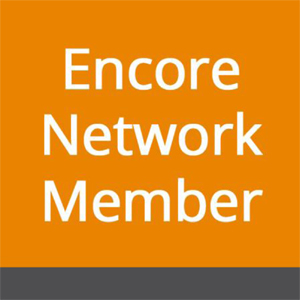 Between 1990 and 2010, the percentage of people 65 and older in the workforce increased from 12.1 percent to 16.1 percent. Today, adults 55 and older are the fastest-growing segment of the workforce. Rather than viewing this as a potential opportunity for economic growth, many people fear that more older adults in the workforce will block opportunities sought by younger people and drain our social security. People had these same fears back in the 70’s when there was a large influx of women in the workforce. What actually happened in the 70’s was a stronger economy with a large increase of disposable income and new emerging industries.
Between 1990 and 2010, the percentage of people 65 and older in the workforce increased from 12.1 percent to 16.1 percent. Today, adults 55 and older are the fastest-growing segment of the workforce. Rather than viewing this as a potential opportunity for economic growth, many people fear that more older adults in the workforce will block opportunities sought by younger people and drain our social security. People had these same fears back in the 70’s when there was a large influx of women in the workforce. What actually happened in the 70’s was a stronger economy with a large increase of disposable income and new emerging industries.
We also know that over-60 adults not only want to stay in the workforce longer but are looking for money and meaning (otherwise known as encore careers).
So here we are with the largest generation in history redefining this stage of life, but we have not envisioned how to tap into the meaning or the opportunity!
Burden?
Unfortunately, many negative stereotypes about aging blind our society and organizations about the potential of adults over 60 who are robust, engaged, experienced, talented and capable! In a recent article in the Atlantic, Linda Fried talks about how we are missing the opportunity to create the roles, infrastructure and policies that embrace the notion of positive aging and plugging people into roles that align with their purpose and utilize their talents.
Encore.org has identified several industries (education, healthcare, non profits, social services) that directly benefit from these older workers. One of the biggest barriers to embracing this older workforce is that organizations have not figured out how to leverage this talent and create new pathways once these individuals have identified their encore career interest.
Marc Freedman, in a recent interview with SHRM foundation states, “The mismatch between [the number of] those who want to move into encore careers and the [number of] opportunities is kind of outrageous. “Compounding the problem, so many are stuck, fumbling forward because the pathways are confusing and poorly marked.”
Opportunity?
There is good news on the horizon. Recent research shows that longer workforce participation does strengthen the economy in a variety of different ways. There is also plenty of positive data from Brookings Institute’s book, “Behavioral Dimensions of Retirement Economics” that describes how the redefinition of retirement has a positive economic impact.
 Another benefit of older workers remaining longer in the workforce is the value of age-diversity. A study by the Munich Center on Economics of Aging, found that age-diverse teams are more adept at problem solving, idea generation and productivity. The intergenerational opportunities are being recognized more and more by organizations and individuals.
Another benefit of older workers remaining longer in the workforce is the value of age-diversity. A study by the Munich Center on Economics of Aging, found that age-diverse teams are more adept at problem solving, idea generation and productivity. The intergenerational opportunities are being recognized more and more by organizations and individuals.
There are also great examples of how large organizations such as Marriott and CVS have started creating new strategies for retaining and recruiting older workers to strengthen their bottom line.
Advantages include; older new hires can better reflect the needs of older customers and extensive work experience and problem solving skills.
There are also organizations such as Encore.org and ReServe, a New York City-based nonprofit that matches professionals age 55 and over with nonprofit positions. These organizations are leading the encore career movement by creating models and programs such as the Encore Fellows Program that help non profits leverage and hire high skilled professionals that they normally would not be able to afford.
In a recent business survey by SHRM two-thirds of the respondents said that the exit of Baby Boomers will have a major impact on the workplace in the next 5 years. “In this knowledge economy, the retention of older workers gives employers a competitive edge by allowing them to continue to tap a generation of knowledge and skill,” says Mark Schmidt, executive director of the SHRM Foundation.
Linda Fried in her article “Making Aging Positive” states, “When we examine issues through a lens that recognizes the value of older adults, we can envision them in many new roles–both paid and volunteer that can strengthen our society.”
Marc Freedman, in his latest book, “The Big Shift”, talks about an abundancy ratio. “Experience plus perspective plus motivation plus time, multiplied by demography, leveraged by new institutions and policies, realized not only in the coming years but for generations to come, equals a society that makes sense again.”
The 10,000 baby boomers that turn 65 every day is good news for businesses, non profits and the community at large.
It is time for us to consider what we can do in Tampa Bay, to shift our thinking, our policies and infrastructure to see this as an opportunity and not a burden.
Join Encore Tampa Bay and the Community Foundation in an Encore Town Hall event on October 21 where we can learn more about how to leverage this encore talent in our own community. For more details and to register go to www.encoretampabay.com

